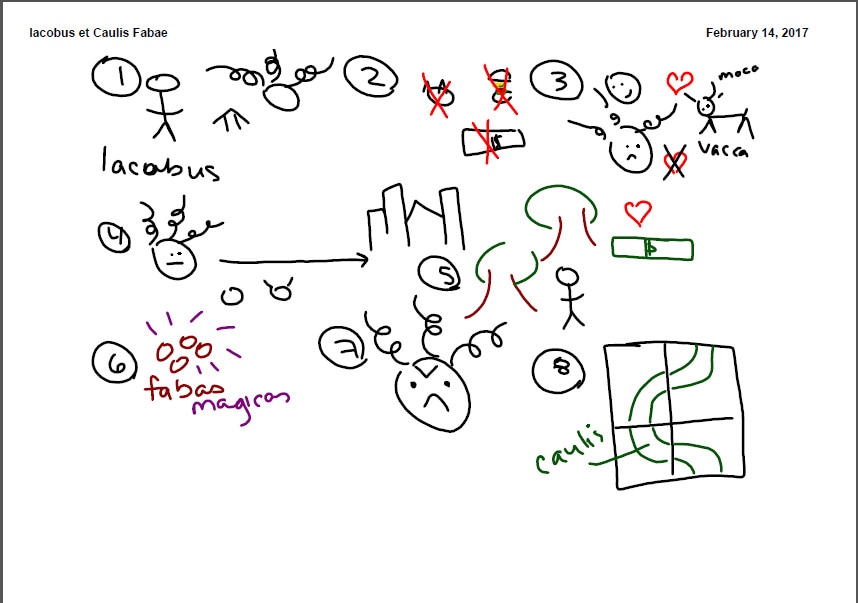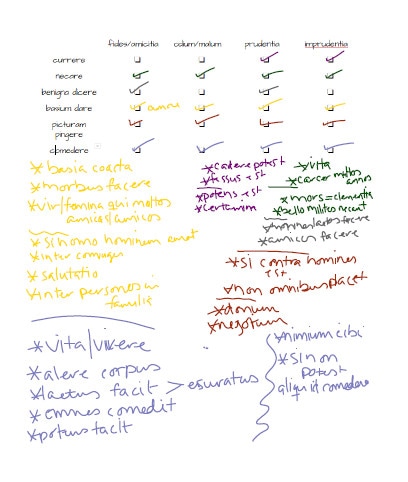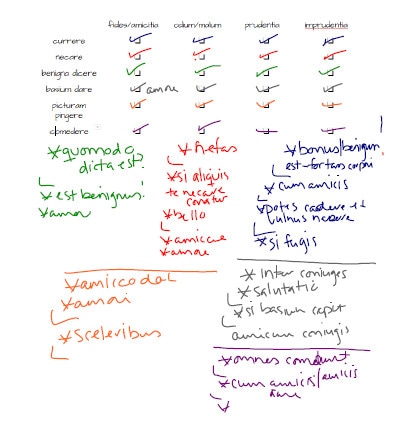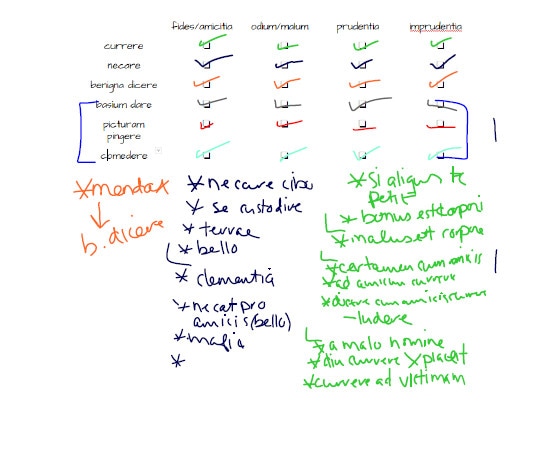Explanation |
Connection to World Readiness Standards |
|
In the Spring semester of 2017, I received a Smart Board. I've never used one before and have never seen one work. I've used it more than a few times this Spring and, while I lament my loss of board space somewhat, am overall very happy with it. The majority of things I use it for a Comprehensible Input strategies and activities that I'd like to be able to save and share with kids. The Smart Board makes personalising things by class much easier than in the past, and provides extra support when doing things like One Word Images or Story Listening so that time isn't lost on incidental things.
On this page:
|
|
Invisibles
|
|
The Invisibles is an activity that I found on Ben Slavic's site. It does not require the use of technology, but I wanted to save the images and use them to create a resources for extra listening and Comprehensible Input.
Students drew these images for the most part and dictated what would appear in the image. I served as a facilitator, rather than as a narrator. The video was recorded using Chrome's extension screencastify and the video was posted for students to view and practice with. |
Story Listening
|
In this activity, I told a story that students had already read and worked with, "Iacobus et Caulis Fabae" (Jack and the Beanstalk) and illustrated as I went. In this activity, students listened to the story being told. The Smart Board enhanced the activity in a way that I was able to easily save my images in colour and use them later for a timed write or a discussion activity.
Student Feedback
|
Task Based - Quid Demonstrat?
|
In the images to the right, you will see three examples of this activity from three different class. Students were asked to determine whether certain activities demonstrated certain qualities in a person. The activities listed were running, killing, saying nice things, giving kisses, drawing pictures, and eating. The qualities given were loyalty/friendship, hatred/evil, good sense, and bad sense.
Students did this in three steps: (1) they evaluated these on their own, (2) they met in small groups and discussed their thoughts, and (3) we met as a class and discussed these ideas and took notes on the arguments presented. This was all done in Latin. Each class hit the same basic points, but also noted different things. The use of the Smart Board allowed us to take notes and then share those notes with other classes, creating a personalised set for each class. The Smart Board also allowed each class to see the differences between each other and the similarities. Students were provided the notes and given the chance to review these at home. Absent students reviewed these as well, writing their own thoughts on the discussion down. Student Feedback:
|
Quae Qualitas est Gravis Nobis
|
In the link to the left, you will find a copy of the class notes for our discussion on Roman qualities. Prior to this task, we spent a week learning about and working with 15 specific Roman qualities such as: honestas (honour), digintas (dignity), and humanitas (humanity). Students prepared for our discussion by first categorising the qualities into four categories:
Students then turned to a neighbour and discussed these various qualities. As a class, we first reviewed which ones had three parts. Then we set up for our discussion of what was important to us by discussing what Cicero, the Romans, and I said were the most important to us. Students were then invited to share what was important to them. At the end of class, students voted on what they felt was the most important for the class. |




